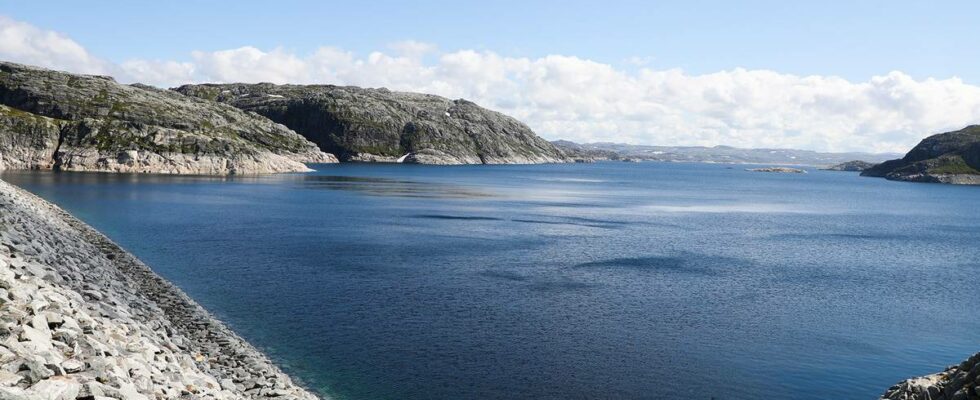In the last week, electricity has cost between 30 and 40 øre per kilowatt hour on average throughout the country. Corresponding week two years ago, the price was up to 308 per kilowatt hour. At that time, the water reservoirs in southern Norway had a filling rate of 55.1 per cent. Now the figure is 78.4 per cent. The Blåsjø reservoir, which is located on the border between Agder and Rogaland, now has a much higher degree of filling than two years ago. Photo: Eirik Gjesdal / news The artificial lake Blåsjø is located on the border between Agder and Rogaland. It is Norway’s largest energy reservoir, and accounts for 9 percent of the country’s total storage volume. – The entire magazine is enough to cover between 5 and 10 per cent of Norway’s annual electricity consumption. That’s what Svein Ilstad, regional manager of Statkraft Sør, says. He explains that the magazine situation right now is normal. This has an impact on the electricity price. – The fact that there are normal amounts of water in Norwegian reservoirs is a good sign with a view to getting a more normalized electricity price. It is too early to say now how the prices will be this winter, but it is a good sign as it is now. Regional manager of Statkraft Sør, Svein Ilstad. Photo: Eirik Gjesdal / news Prices will increase towards winter Olav Botnen is a senior analyst at Volt Power Analytics. He is a power analyst, and has followed Norwegian electricity prices for over 30 years. Power analyst at Vold Power Analytics, Olav Botnen, believes that prices will remain at 40 to 50 øre per kilowatt hour until October. Photo: Erik Wiig Andersen Based on how the market looks now, he makes a prediction about future electricity prices. – In Southern Norway and Western Norway, prices will probably remain at 40 to 50 øre per kilowatt-hour until October. – When winter comes, we are on track for 80 øre per kilowatt-hour. Further north in the country, prices are lower, between 40 and 50 øre, if you believe what the market is trading at now, he says. Keeping the electricity subsidy Despite more normal electricity prices, the government has no plans to scrap the electricity subsidy scheme. This is how the electricity support scheme is now. You get support in those hours when the electricity spot price (spot price without value added tax and surcharge) in your price range is higher than 73 øre per kilowatt hour. During these hours, you get support for 90 per cent of the amount above 73 øre/kWh. In addition, 25 percent is added as compensation for the value added tax you pay for electricity if you live in central or southern Norway. Nordland, Troms and Finnmark are exempt from paying value added tax. At least not at first. – The government has decided that we will have the electricity subsidy for some time to come, so that people can feel secure, and know that it will not be the electricity bill that overturns private finances. Elisabeth Sæther (Ap) is state secretary in the Ministry of Energy. Elisabeth Sæther (Ap) is state secretary in the Ministry of Energy. Photo: Johan Moen / news She says that between this year and 2025 no changes will be made to the scheme as it is now, but also specifies that the support is temporary. – In the longer term, it will be natural to look at adjustments and possible phasing out of the electricity support. If electricity prices are persistently low, there is obviously no need for the same electricity support. Published 29/07/2024, at 05.47
ttn-69
Norway has far more water stored than in 2022. Analyst predicts lower electricity prices until October – news Rogaland – Local news, TV and radio

